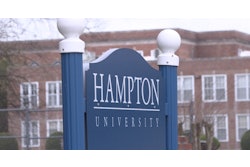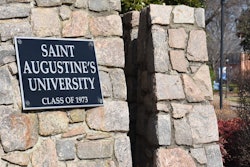Eliminating the Last Vestiges of Segregation
I was recently asked to speak at the annual President’s Leadership Summit of the Thurgood Marshall Scholarship Fund and provide the group with an update of federal higher education desegregation activity. The question-and-answer period that followed my presentation impressed upon me the need for broader clarification regarding federal policy on higher education desegregation, particularly as it affects historically Black colleges and universities. In the past six years, the Department of Education’s Office for Civil Rights has established a record of accomplishments based firmly on our federal policy in this area.
In January 1994, the office produced an updated federal policy on higher education desegregation that utilizes a “vestiges” analysis. This policy is based on the 1992 Supreme Court decision in the Mississippi case, Ayers vs. Fordice. The court ruled that a wide variety of factors should be examined to determine whether the vestiges of a segregated system of higher education continue — i.e., policies and practices traceable to the prior system of segregation that continue to have segregative effects. Since 1994, a vestiges analysis has been at the core of federal policy on Title VI compliance in higher education desegregation cases.
In January 1994, the Office of Civil Rights proceeded to activate its docket of higher education desegregation cases, reaching agreements with many states. The agreements are designed to bring states into compliance with Title VI of the 1964 Civil Rights Act by addressing vestiges remaining from past systems of segregation that continue to promote segregation and limit educational opportunities for African American students. They provide for funding for enhancement of programs and facilities at HBCUs, and often require not only placement of unique programs at the HBCU to attract students of other races, but also efforts to expand opportunities for African American students. Further, the agreements also provide for increasing minority student access at traditionally White institutions. At this point, the only states whose cases are outstanding are Maryland and Virginia.
I am often asked whether or not the racial balance of students at an HBCU is the standard of compliance in OCR’s cases. The answer is no. Unlike elementary and secondary education where students are often assigned to public schools, students choose which college they attend. Title VI is concerned with whether or not that choice is affected by segregation-promoting vestiges of the previous system. If the racial composition of any college is predominately of one race, yet there are no policies or practices of the state that cause that racial identification, that could be practicably eliminated, then there is no Title VI violation. The measure is simply whether there are any identifiable vestiges of past segregation that have a present-day segregative effect.
At the Thurgood Marshall Foundation’s President’s Summit, I expressed concern regarding one area that is considered when addressing the issue of vestiges — the unnecessary duplication of programs. This subject presents some very tough challenges. While some program duplication may be unavoidable between neighboring universities, upper-level program duplication at a White college and a Black college in close proximity was typically for purposes of segregation. Continued practices of duplicating programs when geography and demand dictate otherwise clearly points to a segregational vestige.
What we have seen over the last six years are efforts to add programs at traditionally White schools that duplicate those in existence at HBCUs. Furthermore, on occasion, these are programs that were placed at the HBCUs for enhancement purposes as part of the earlier Title VI desegregation plans. It is reasonable to assume that these challenges will continue as higher education generally becomes more competitive in what colleges offer. As times goes on, and schools increasingly compete for students, these Title VI issues may become more troublesome. Clearly, strategies that go beyond simply civil rights enforcement need to be developed that will allow HBCUs to thrive in this arena of increased competition.
— Dr. Raymond C. Pierce
Deputy Assistant Secretary
U.S. Department of Education
Office for Civil Rights
© Copyright 2005 by DiverseEducation.com















